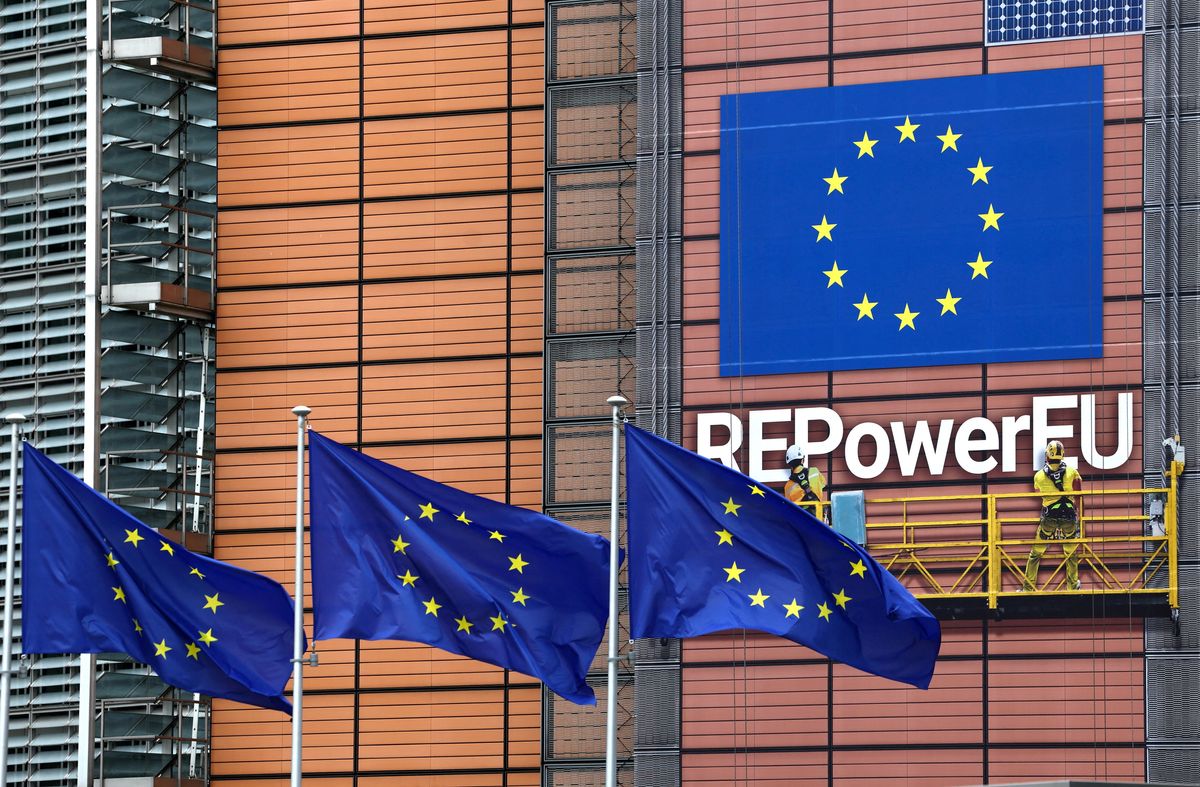The EU launches the world’s first carbon border tax
Right now, six industries are being affected – iron and steel, aluminum, cement, electricity, fertilizers and hydrogen.

A few minutes every morning is all you need.
Stay up to date on the world's Headlines and Human Stories. It's fun, it's factual, it's fluff-free.
The backstory: The EU has been trying to address the climate crisis for a while. Back in 2005, it put together a cap and trade system to get organizations to cut their carbon emissions. Basically, this put a cap on how much carbon emissions certain businesses could release and then made them start paying once they broke this cap.
This scheme was actually the first of its kind in the world. It’s been criticized, though, for having pretty low fines, which aren’t much of a barrier for companies. But, this whole plan has been revised and built on over the years to be more effective and to cover more industries.
More recently: Earlier this year, the EU decided to start clearing away those caps altogether, which were essentially allowing companies to pollute without any fallout up to a certain point. And the bloc also started working on a border carbon tariff to double down on cutting emissions. It created this new tariff policy that would put a tax on imports depending on how much CO2 is released when producing that import. When the tariff was announced, it was the first policy like this in the world.
It’s called the Carbon Border Adjustment Mechanism (CBAM). The idea is that the EU sets a price on carbon released when making carbon-intensive stuff like cement, metals, fertilizers, electricity and more. Whoever imports these products into the EU would then have to pay this set price. It’s meant to protect European companies that have to abide by stricter climate regulations and also to prevent industries from moving to countries with lower climate standards to get past the rules. Other countries have expressed some concern, with China disagreeing with the idea just last month.
The development: On Sunday, the EU launched the first step of the CBAM tariff. Right now, six industries are being affected – iron and steel, aluminum, cement, electricity, fertilizers and hydrogen. If the country of origin for these products has some kind of carbon tax for them already, then part of the tariff can be waived for what’s already been paid out.
In this first phase, the EU is still working out the kinks, figuring out exactly how to price certain products from certain places. And the bloc won’t actually start collecting tariff payments until 2026. Even though the tariff is still in its infancy, other countries, like the US, are already looking into similar policies.
Key comments:
“It will have strategic and financial implications for businesses around the world,” said Tim Figures, a senior expert at Boston Consulting Group. “Sunday is just the start of a long process, but even if some companies are not impacted right away, they may be at a later stage, as the EU has an option of including more industries.”
"The emissions embedded in international trade, it's not a majority, it's a minority," said Shuting Pomerleau, who researches climate policy at the Niskanen Center. "And I feel like lots of times, policymakers or analysts, they get a little carried away and overlook this fact."




Comments ()